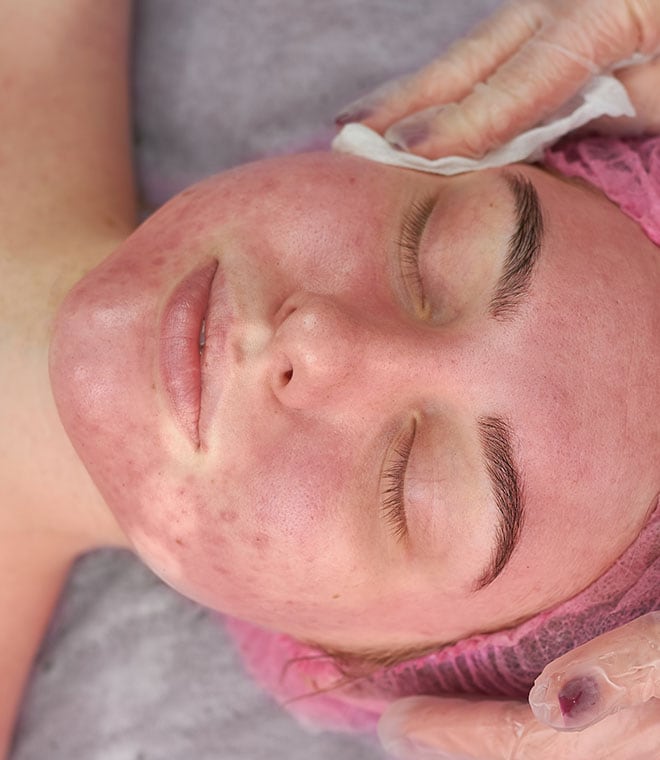Health
What is skin cancer?
By Jenilee Matz, MPH Sep 26, 2023 • 9 min
Skin cancer is the most common type of cancer. In fact, more people are diagnosed with skin cancer each year in the United States than all other cancers combined. Learn about the different types of skin cancer, skin cancer signs and how to protect yourself and your family.
What causes skin cancer?
Skin cancer happens when cells in the skin become damaged, and then abnormal cells start growing too fast. The overgrowth of malignant (cancerous) cells build up to form spots or bumps called tumors on the epidermis (outer layer of skin). The epidermis is made up of three types of cells. Cancer can start in any of the cells:
- Squamous cells: Flat, thin cells on the top layer of the epidermis.
- Basal cells: Round cells directly below the squamous cells.
- Melanocytes: Cells that are in the lower part of the epidermis. Melanocytes make melanin, which is the pigment that gives your skin its color.
Most cases form on skin that received unprotected and repeated exposure to sunlight and other sources of ultraviolet (UV) light, such as tanning beds. However, not all cases of skin cancer occur on parts of the body that had UV light exposure. Some of these skin cancers may be caused by other factors, such as gene changes, which may be hereditary.
People with certain risk factors are more likely than others to develop skin cancer. Specific risk factors vary depending on the type of skin cancer, but some general risk factors include having the following:
- A lighter natural skin tone
- Skin that burns, freckles or reddens easily, or becomes painful in the sun
- Blue, green or other light-colored eyes
- Blonde or red hair
- Many or certain types of moles
- A family or personal history of skin cancer
- Exposure to the sun through work and play
- A history of sunburns, especially during the early part of your life
- A history of indoor tanning
What are the types of skin cancer?
The main skin cancer types include basal cell carcinoma (skin cancer), squamous cell carcinoma and melanoma. There are also other forms of skin cancer, but they are far less common.
Nonmelanoma skin cancers
Basal cell skin cancer and squamous cell skin cancer are nonmelanoma skin cancers. Basal cell skin cancer is the most common skin cancer in the U.S., with squamous cell carcinoma being the second most commonly diagnosed. Close to 9 in 10 cases of nonmelanoma skin cancers are due to overexposure of UV radiation. In fact, these skin cancers tend to mostly be found on parts of the body that receive sun exposure. Squamous cell and basal cell skin cancers are less likely than melanoma to spread to other parts of the body. Still, they can be life-threatening, so finding and treating these cancers early is vital.
Melanoma skin cancers
Melanoma isn't as common as nonmelanoma skin cancers, but it's more likely to grow and spread. It also causes the majority of deaths from skin cancer. The melanoma survival rate is higher when the disease is found and treated in its early stages, before it spreads to other parts of the body. Metastatic melanoma, the most serious stage, is melanoma that's spread through the lymph nodes to distant sites, such as the liver, lungs, bones and brain. Melanoma has four subgroups, including nodular melanoma. This is the most aggressive form of melanoma, as it's often invasive by the time it's diagnosed.
What does skin cancer look like?
Skin cancer symptoms can show up as new moles, growths, lumps, sores, blemishes or lesions on your body. Skin cancer spots and skin cancerous moles can also be existing spots on your skin that change in size, shape or color. They may be red, swollen, scaly, bleeding or they may be sores that don't heal. A skin cancer spot may be painful or itchy. Each type of skin cancer can look different on the skin. Also, skin cancer may look different in people with darker skin tones than they do in in people with fair skin. If you have any new spots, changing spots or feel like an area of your skin looks or feels differently, see a dermatologist so they can check you for skin cancer.
What does melanoma look like?
Your healthcare provider may use the "ABCDE" rule to look for the following warning signs of melanoma:
- Asymmetry: When one side of a mole or mark doesn't match the other side.
- Border: The edges of the mole may appear irregular or blurry.
- Color: The color of the spot may not be consistent.
- Diameter: The spot is more than ¼ of an inch across (about the size of a pencil eraser).
- Evolving: The mole changes in size, shape or color.
If you have any concerning areas of skin, your healthcare provider may take a biopsy, which involves removing all or part of the suspect skin. Then they'll examine it under a microscope to look for signs of cancer.
How is skin cancer treated?
Your healthcare provider will determine your treatment plan based on the type of skin cancer you have, where you have it, its stage and other factors. Treatment can include:
- Surgery to remove the cancer.
- Local therapy, which can be used to treat basal and squamous cell cancers that haven't spread to lymph nodes. These can include cryotherapy (a topical treatment that freezes and kills cancer cells), topical chemotherapy (anti-cancer medicine applied directly to your skin), laser surgery (a laser that vaporizes cancer cells), immune response modifiers (medicines that cause cancers to shrink and go away) and chemical peeling (a chemical applied to the skin that kills cancer cells).
- Radiation therapy, which uses high-energy rays or particles to kill cancer cells.
- Systemic chemotherapy, which involves taking anti-cancer medications to attack cancer cells that have spread to lymph nodes and other areas of the body.
- Targeted therapy or using medicines that target different parts of skin cancer cells.
How can you prevent skin cancer?
In general, the sooner you diagnose skin cancer and start treatment, the better your prognosis. This is why skin cancer screening, or spotting skin cancer in its early stages before symptoms start, is so important. If you have any new moles or growths or notice other changes in your skin, see your dermatologist. You should also see your dermatologist as often as recommended for a skin check so they can look for early signs of skin cancer.
Avoiding the sun's harmful rays and other sources of UV radiation can reduce your risk of skin cancer. Stay out of the sun and seek shade between the hours of 10 a.m. and 4 p.m., when the sun is strongest. Wear a broad-spectrum sunscreen with an SPF 30 or higher any time you're in the sun for more than a brief period.
Clinically reviewed and updated September 2023.
Sources:
- https://www.skincancer.org/skin-cancer-information/skin-cancer-facts#general
- https://www.cancer.org/cancer/skin-cancer/prevention-and-early-detection/what-is-skin-cancer.html
- https://www.cancer.gov/types/skin/patient/skin-treatment-pdq
- https://www.cancer.org/cancer/basal-and-squamous-cell-skin-cancer/causes-risks-prevention/what-causes.html
- https://www.cancer.org/cancer/melanoma-skin-cancer/causes-risks-prevention/what-causes.html
- https://www.melanoma.org/understand-melanoma/what-is-melanoma/metastatic-melanoma
- https://www.skincancer.org/skin-cancer-information/melanoma/types-of-melanoma
- https://www.cancer.org/latest-news/how-to-spot-skin-cancer.html
- https://www.cancer.org/cancer/basal-and-squamous-cell-skin-cancer/detection-diagnosis-staging/detection.html
- https://www.skincancer.org/skin-cancer-information/squamous-cell-carcinoma/scc-treatment-options
- https://www.cancer.org/cancer/basal-and-squamous-cell-skin-cancer/treating.html
- https://www.cancer.gov/types/skin/anyone-can-get-skin-cancer
- https://www.cdc.gov/cancer/skin/basic_info/risk_factors.htm



